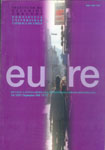Santiago, never-endiding oil spot? What happens to population when the city gorws indiscriminately?
DOI:
https://doi.org/10.4067/S0250-71611998007200005Keywords:
urban growth, metropolization, urban planning, urban policyAbstract
The incorporation of big extensions of land previously dedicated to agriculture, characterizes the rapid growth experienced nowadays by the city of Santiago. This paper opens a debate about the implications of two different modes of city growth in the lifestyle of its citizens. The type of growth known as Í€œsprawlÍ€, with clearly separated functional areas, is represented by the city of Los Angeles, California. Its opposite correspond to the European model of city, more concentred, with a dense center an a mixture of uses. The limitations showed by the traditional city planning systems, the advantages that explain the success of the American model and the impacts of the sprawl are discussed here. The interrogation about the real possibilities to oppose the seemingly clear tendency to sprawl remains opened.Downloads
Published
How to Cite
Issue
Section
License
Copyright (c) 1998 Revista EURE - Revista de Estudios Urbano Regionales

This work is licensed under a Creative Commons Attribution 4.0 International License.
Al momento de aceptar la publicación de sus artículos, los autores deberán formalizar la cesión de derechos de autor a EURE, según las condiciones establecidas por la Revista.
Ésta establece que el autor autoriza a EURE de manera gratuita, exclusiva e ilimitada a reproducir, editar, publicar, distribuir, publicitar, comercializar y traducir el artículo, a cualquier soporte conocido o por conocer y desarrollar.
Del mismo modo, los autores aseguran que el artículo propuesto es original, no publicado y no propuesto para tal fin a otro medio de difusión.


